CYANOACRYLIC ACID METHYL ESTER
- CAS NO.:137-05-3
- Empirical Formula: C5H5NO2
- Molecular Weight: 111.1
- MDL number: MFCD00079082
- EINECS: 205-275-2
- SAFETY DATA SHEET (SDS)
- Update Date: 2024-12-18 14:15:30
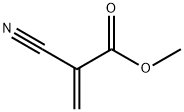
What is CYANOACRYLIC ACID METHYL ESTER?
Description
Methyl cyanoacrylate (MCA) is an organic compound that contains several functional groups, a methyl ester, a nitrile, and an alkene. It is a colorless liquid with low viscosity. Its chief use is as the main component of cyanoacrylate glues.It can be encountered under many trade names. Methyl cyanoacrylate is less commonly encountered than ethyl cyanoacrylate.
It is soluble in acetone, methyl ethyl ketone, nitro methane, and dichloromethane. MCA polymerizes rapidly in presence of moisture.
Chemical properties
Colorless liquid.
Chemical properties
Methyl cyanoacrylate is a thick, clear liquid adhesive. The odor threshold is 2.2 ppm.
The Uses of CYANOACRYLIC ACID METHYL ESTER
Surgical aid (tissue adhesive).
The Uses of CYANOACRYLIC ACID METHYL ESTER
In high-bond strength, fast-acting glues (e.g., Krazy Glue); surgical use as tissue adhesive
General Description
Clear slightly yellow liquid.
Air & Water Reactions
Insoluble in water.
Reactivity Profile
CYANOACRYLIC ACID METHYL ESTER is an unsaturated aliphatic nitrile and ester. Nitriles may polymerize in the presence of metals and some metal compounds. They are incompatible with acids; mixing nitriles with strong oxidizing acids can lead to extremely violent reactions. Nitriles are generally incompatible with other oxidizing agents such as peroxides and epoxides. The combination of bases and nitriles can produce hydrogen cyanide. Nitriles are hydrolyzed in both aqueous acid and base to give carboxylic acids (or salts of carboxylic acids). These reactions generate heat. Peroxides convert nitriles to amides. Nitriles can react vigorously with reducing agents. Acetonitrile and propionitrile are soluble in water, but nitriles higher than propionitrile have low aqueous solubility. They are also insoluble in aqueous acids. Esters react with acids to liberate heat along with alcohols and acids. Strong oxidizing acids may cause a vigorous reaction that is sufficiently exothermic to ignite the reaction products. Heat is also generated by the interaction of esters with caustic solutions. Flammable hydrogen is generated by mixing esters with alkali metals and hydrides.
Hazard
Toxic by inhalation. Eye and upper respi-ratory tract irritant.
Health Hazard
Methyl 2-cyanoacrylate is an irritant of the eyes and nose and can induce occupational asthma.
Fire Hazard
Flash point data for CYANOACRYLIC ACID METHYL ESTER are not available but CYANOACRYLIC ACID METHYL ESTER is probably non-flammable.
Safety Profile
Moderately toxic by ingestion and inhalation routes. Experimental reproductive effects. A human eye irritant. Can bond the eyelids or skin surfaces instantly. Mutation data reported. When heated to decomposition it emits toxic fumes of NOx and CN-.
Safety
Heating the polymer causes depolymerization of the cured MCA, producing gaseous products strongly irritant to lungs and eyes.
Potential Exposure
Methyl 2-cyanoacrylate is used in production of coatings and textiles; in the manufacture of quick-setting, high-strength, adhesive cements. Often found around the home; bonds eyes and skin in seconds. Keep out of the reach of children.
First aid
If this chemical gets into the eyes, remove anycontact lenses at once and irrigate immediately for at least15 min, occasionally lifing upper and lower lids. Seek med-facility. When this chemical has been swallowed, get medi-cal attention. Give large quantities of water and inducevomiting. Do not make an unconscious person vomit.Medical observation is recommended for 24- -48 h afterbreathing overexposure, as pulmonaryedema may bedelayed. As first aid for pulmonary edema, a doctor orauthorized paramedic may consider administering a cortico-steroid spray.
storage
Color Code- -Red: Flammability Hazard: Store ina flammable liquid storage area or approved cabinet awayfrom ignition sources and corrosive and reactive materials.Prior to working with this chemical you should be trainedon its proper handling and storage. Methyl 2-cyanoacrylateals or peroxides, since violent reactions occur. Store in orig-inal containers under refrigerated conditions at 2- -8℃.Where possible, automatically pump liquid from drums orother storage containers to process containers.
Shipping
UN3334 Aviation regulated liquid, n.o.s., Hazard class: 9; Labels: 9-Miscellaneous hazardous material. Technical Name Required.
Incompatibilities
Compounds of the carboxyl group react with all bases, both inorganic and organic (i.e., amines) releasing substantial heat, water and a salt that may be harmful. Incompatible with arsenic compounds (releases hydrogen cyanide gas), diazo compounds, dithiocarbamates, isocyanates, mercaptans, nitrides, and sulfides (releasing heat, toxic, and possibly flammable gases), thiosulfates and dithionites (releasing hydrogen sulfate and oxides of sulfur). Reacts violently with water, bases, and peroxides. Contact with alcohols, water, amines, and alkalis can cause rapid polymerization
Properties of CYANOACRYLIC ACID METHYL ESTER
| Melting point: | -40 °C |
| Boiling point: | bp 48-49° |
| Density | nD25 1.443. d20 1.1044 |
| vapor pressure | 49hPa at 20℃ |
| refractive index | n20D 1.4459 |
| form | Colorless liquid |
| EPA Substance Registry System | Methyl 2-cyanoacrylate (137-05-3) |
Safety information for CYANOACRYLIC ACID METHYL ESTER
| Signal word | Warning |
| Pictogram(s) |
 Exclamation Mark Irritant GHS07 |
| GHS Hazard Statements |
H315:Skin corrosion/irritation H319:Serious eye damage/eye irritation H335:Specific target organ toxicity, single exposure;Respiratory tract irritation |
| Precautionary Statement Codes |
P261:Avoid breathing dust/fume/gas/mist/vapours/spray. P264:Wash hands thoroughly after handling. P264:Wash skin thouroughly after handling. P270:Do not eat, drink or smoke when using this product. P271:Use only outdoors or in a well-ventilated area. P280:Wear protective gloves/protective clothing/eye protection/face protection. P362:Take off contaminated clothing and wash before reuse. P363:Wash contaminated clothing before reuse. P305+P351+P338:IF IN EYES: Rinse cautiously with water for several minutes. Remove contact lenses, if present and easy to do. Continuerinsing. P332+P313:IF SKIN irritation occurs: Get medical advice/attention. P337+P313:IF eye irritation persists: Get medical advice/attention. P405:Store locked up. P403+P233:Store in a well-ventilated place. Keep container tightly closed. P501:Dispose of contents/container to..… |
Computed Descriptors for CYANOACRYLIC ACID METHYL ESTER
New Products
Tert-butyl bis(2-chloroethyl)carbamate (S)-3-Aminobutanenitrile hydrochloride N-Boc-D-alaninol N-BOC-D/L-ALANINOL N-octanoyl benzotriazole 4-Hydrazinobenzoic acid 3,4-Dibenzyloxybenzaldehyde 1,1’-CARBONYLDIIMIDAZOLE R-2-BENZYLOXY PROPIONIC ACID 1,1’-CARBONYLDI (1,2-4 TRIAZOLE) 4-HYDROXY BENZYL ALCOHOL 3-NITRO-2-METHYL ANILINE (2-Hydroxyphenyl)acetonitrile 4-Bromopyrazole 5-BROMO-2CYANO PYRIDINE 5,6-Dimethoxyindanone 5-broMo-2-chloro-N-cyclopentylpyriMidin-4-aMine 4-methoxy-3,5-dinitropyridine 2-(Cyanocyclohexyl)acetic acid 2-aminopropyl benzoate hydrochloride 1-(4-(aminomethyl)benzyl)urea hydrochloride tert-butyl 4- (ureidomethyl)benzylcarbamate diethyl 2-(2-((tertbutoxycarbonyl)amino) ethyl)malonate Ethyl-2-chloro((4-methoxyphenyl)hydrazono)acetateRelated products of tetrahydrofuran

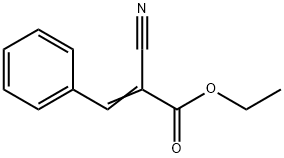
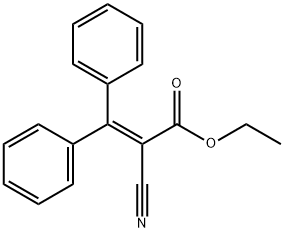
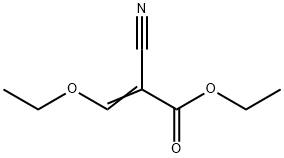
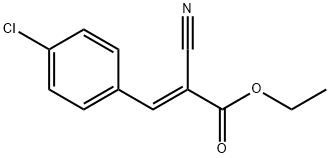
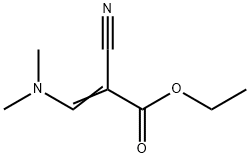

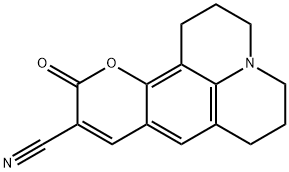
You may like
-
 873-83-6 6-Aminouracil (or) 4-Amino-2,6- dihydroxypyrimidine, (or) 6-Amino2,4-pyrimidinediol 99%View Details
873-83-6 6-Aminouracil (or) 4-Amino-2,6- dihydroxypyrimidine, (or) 6-Amino2,4-pyrimidinediol 99%View Details
873-83-6 -
 55441-95-7 99%View Details
55441-95-7 99%View Details
55441-95-7 -
 N-Vinylformamide 99%View Details
N-Vinylformamide 99%View Details
13162-05-5 -
 Chloro Uracil 1820-81-1 99%View Details
Chloro Uracil 1820-81-1 99%View Details
1820-81-1 -
 207557-35-5 99%View Details
207557-35-5 99%View Details
207557-35-5 -
 2-ethyl-6-methyl-3-hydroxypyridine succinate 99%View Details
2-ethyl-6-methyl-3-hydroxypyridine succinate 99%View Details
127464-43-1 -
 2-ETHYLPYRIDINE 100-71-0 99%View Details
2-ETHYLPYRIDINE 100-71-0 99%View Details
100-71-0 -
 181228-33-1 (S)-Methyl 3-amino-2-((tert-butoxycarbonyl)amino)propanote Hydrochloride (DAP-OMe. HCl) 99%View Details
181228-33-1 (S)-Methyl 3-amino-2-((tert-butoxycarbonyl)amino)propanote Hydrochloride (DAP-OMe. HCl) 99%View Details
181228-33-1